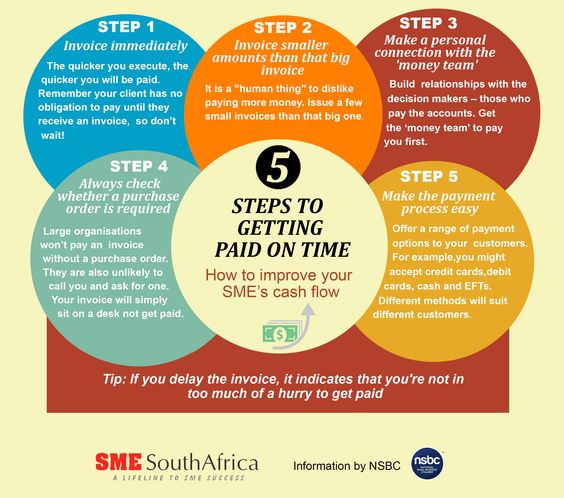 Cash flow is the lifeline of any business – so goes the common business mantra.
Cash flow is the lifeline of any business – so goes the common business mantra.
But getting customers to pay on time continues to be one of the biggest challenges for business owners.
Mike Anderson, founder and CEO of the National Small Business Chamber, says when money is tight, paying basic bills can be challenging.Cash is a critical necessity as it allows businesses to invest in their future by expanding, buying new equipment, hiring key staff or retaining key staff by rewarding them further.Quoting research done by Standard Bank’s Small Enterprise and Enterprise Development division looking at cash flow management for businesses, Anderson says businesses can overcome their cash flow challenges by adopting basic invoicing procedures.
He summarises their findings in a few simple steps that SMEs can take to keep cash flowing in.
1. Invoice immediately
According to Anderson, invoicing must be an immediate action.
“The quicker you execute, the quicker you will be paid. Furthermore, if you delay the invoice, it indicates that you’re not in too much of a hurry to get paid,” he says. “Business owners are often slow at getting their invoices out once they have completed their work for a customer. Remember that your client has no obligation to pay until they receive an invoice, so don’t wait.”
2. Invoice smaller amounts than that big invoice
Anderson says it is a known fact that it is a “human thing” to dislike paying over money. “So what we need to do is make it easier by splitting invoices, rather issue a few small invoices than that big one. This sometimes poses a problem, however if you can do it, it certainly works,” he says.
“Get personal with the ‘money team’ and get them to pay you first”
3. Make a personal connection with the ‘money team’
According to Anderson, the key success factor in growing top line is to build solid relationships with the decision makers.
“What we forget to do is build relationships with those in the business that pay the accounts. Get personal with the ‘money team’ and get them to pay you first,” he recommends.
4. Always check whether a purchase order is required
Anderson says ,any large organisations will not pay an invoice without a purchase order. He says they are also unlikely to call you and ask for one. “Your invoice will simply sit on a desk, not be entered into the system, and not paid,” he says.
5. Make the payment process easy
“Offer a range of payment options to your customers and put your payment methods on all proposals, invoices and statements,” Anderson says. For example, you might accept credit cards, debit cards, cash and EFTs. Different methods will suit different customers, so offer as many options as possible, he adds.







